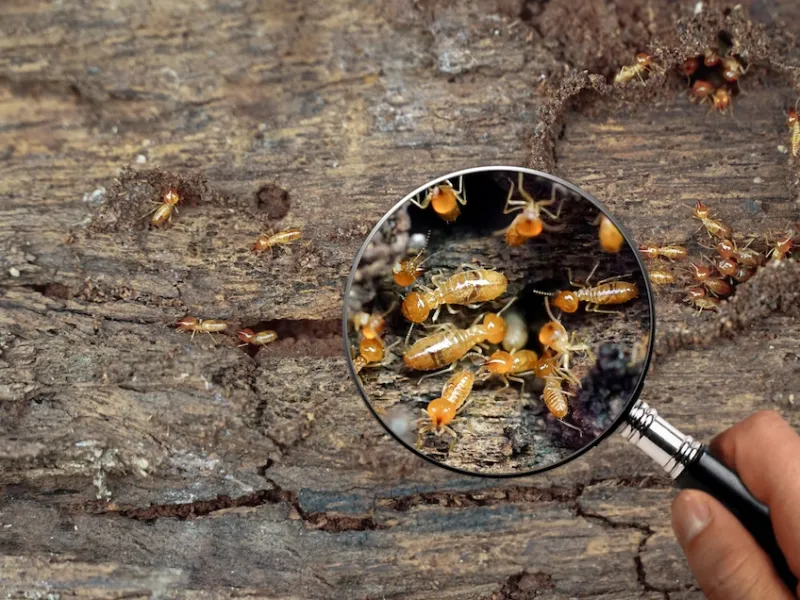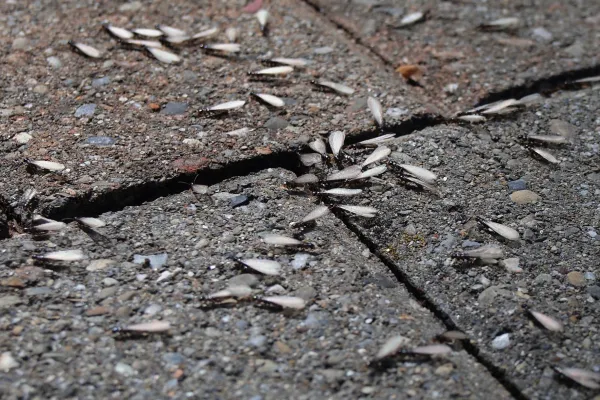8 Myths About Termites

When left untreated, termites can be a homeowner’s worst nightmare. Knowing the proper remedies to prevent these pests is the first step in effective termite protection which requires debunking the misinformation that is spread regarding termites and termite protection. Our professional pest exterminators are here to uncover some myths surrounding termites to better protect you and your home.
You Can Easily Spot a Termite Infestation
One of the most common misconceptions about termites is that homeowners are able to spot a termite infestation in time to prevent a major issue. Termites are known as quiet invaders – you won’t see them until it’s too late. This doesn’t mean you won’t notice them eventually but generally a termite infestations can be spotted with many different telltale signs. Keep an eye out for discolored drywall, tunnels in wood, damage under paint or wallpaper, or droppings around the house.
Even though there is still a chance that you spot termites eventually, it is better to prevent the problem from happening in the first place.
You Don’t Need to Worry About Termites During the Winter
Unfortunately, termites pose a threat to homes all year long. It is tempting to assume that once the warm weather leaves, the termites go with it. The truth is that termites do not hibernate. Instead, when searching for warmth, they tunnel deeply into wooden structures. This tends to increase structural damage which leads to a more intense extermination process. Therefore, it is smart to have a termite protection plan and to consult with a pest control specialist before the winter begins.
Formosan Termites Require Additional Treatments
In the Southeast, there are four species of subterranean termites. The Formosan termite has been in the Southeast since the 1950s. Some consumers believe that the Formosan termite is new to this area and a type of “super termite” rather than a subterranean termite. Some companies have taken advantage of this misconception which is wrong. In reality, no special treatments or baits are needed to treat Formosan termites as long as thorough inspections of the structure are performed annually. Don’t be fooled into paying extra or buying additional treatments for Formosan termite coverage!
A One-Time Treatment Does the Trick
Another common misconception is that if a house is treated for termites once, it is safe from termites forever. This is not the case. Termite protection requires a structured and repetitive schedule to stay on top of the problem before it gets out of control.
Additionally, there is a hesitation amongst homeowners that repetitive termite treatment is not necessary or too expensive. In reality, the structural damage that comes as a result of ignoring termite treatment is much more costly.
Concrete Houses Don’t Need To Worry
Unfortunately, houses with brick exteriors are not entirely safe from termite infestation. Although termites cannot eat through concrete, small cracks in the exterior allow termites to enter to reach the wooden frame of a home. Whether your house has brick, stone, stucco, or another exterior, most houses typically have wooden framing. Termites will be able to work their way underneath into this framing, entering the home.
Termites Are in The Ant Family
Although they do share a resemblance, do not mistake a termite for a relative of an ant – these critters are very different. Don’t let the the two antennae and six legs fool you! Ants eat plenty of other things, but are not interested in eating wood, unlike the termite. Termites feed specifically on cellulose found in wood, paper, and certain plants.
Preventative measures taken toward an ant infestation are different from termite protection specifically. To get a second opinion and differentiate between the two pests, speak with a one of our pest control specialists today.
Termites Only Eat Wood
Termites do primarily eat wood but are not limited to this diet. They are dependent on cellulose to receive nutrients. Therefore, they search for a variety of materials that contain this cellulose material. These can include wall paper, plants, cardboard boxes, books, bookshelves, cotton clothing, cabinets, upholstered furniture, and carpet. With that being said, it is wise to get ahead of the possibility of a termite infestation before they enter the home.
DIY Termite Treatment is Equally as Effective
It may sound easy, but the risks to an at-home termite treatment greatly outweigh the potential benefits, and are not nearly as effective as proper pest control techniques. By proceeding with non-professional treatments, you are likely to get ineffective results, but also possibly risking the health of your pets and family members. Proper and effective termite treatment requires specialized equipment and monitoring from a pest control specialist who has experience and knowledge in the field.
There are alot of myths regarding termites and how to better protect your home from infestation. Our expert exterminators want to breakdown the most common myths about termites to better educate you. Please contact us at Palmetto Exterminators to speak with an expert pest control specialist today.


